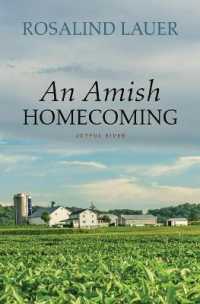- ホーム
- > 洋書
- > 英文書
- > Literary Criticism
Full Description
Throughout the twentieth century, scholars accepted that there was something called "traditional" poetic meter, and that free verse liberated poets from the fetters of old forms. In this version of literary history, free verse saved poetry from cultural irrelevance and marked a broadly oppositional politics. This book tells a different story—and offers a radically new account of the rise of free verse poetry in the United States.
In the 1910s, white academics, editors, and critics popularized free verse by arguing that it was the formal expression of a white American race. For Black and Indigenous authors, free verse did not reliably function as a break or an opening; it was instead a form of enclosure and used to shore up racial hierarchies. The story of the racialization of free verse has been consistently edited out of accounts of modernism—especially those that focus on how free verse was promoted in storied little magazines such as Poetry and Others. In The Enclosures of Free Verse, Erin Joyce Kappeler returns to those magazines and their associated anthologies to show that free verse was a racial formation of whiteness and to explore how Black and Indigenous poets navigated this racialization of poetic form.







